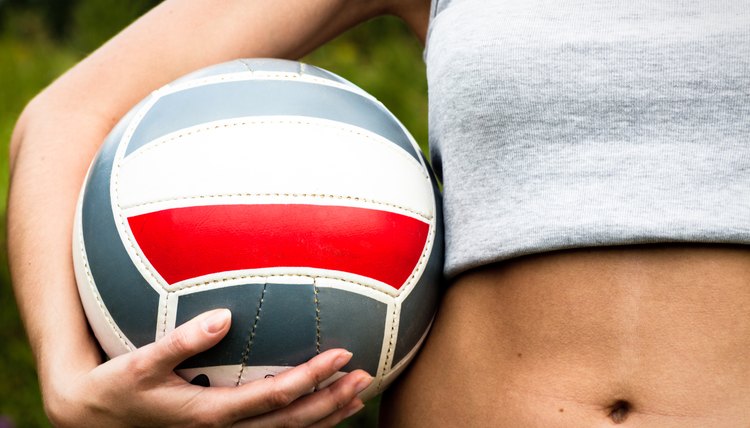Bruised Arms From Volleyball

Volleyball isn’t traditionally considered a contact sport, but volleyball players may argue with that characterization. Arm bruising results from contact with the ball during diving for loose balls, jumping for blocks and spiking. As a result, volleyball players are susceptible to bruised arms. Also called a contusion or hematoma, bruising is characterized by skin discoloration when small blood vessels break beneath the skin.
How Arm Bruises Occur
Bruised arms in volleyball are generally associated with the repeated contact from the volleyball while passing, receiving serves or blocking a spike attempt. The speed and impact of the volleyball crushes the muscle fibers and connective tissue under the skin, damaging small vessels. Bruises can appear anywhere on the arms, but are most common on the inside of the forearms.
Types of Bruises
Three types of bruising occur in volleyball players, ranging in severity and symptoms. Subcutaneous bruises -- which occur beneath the skin -- are the mildest type and don't usually affect performance. Intramuscular bruises develop within the skeletal muscle and can cause a loss of strength and flexibility. A bone bruise -- or periosteal bruise -- is the most severe and may require medical attention.
Prevent Arm Bruises
You can reduce the risk of bruising in volleyball by employing various training strategies and using protective equipment. Consider taping your wrists or wearing a protective arm sleeve. This can dampen the force of the volleyball during practice, which could hinder performance. Proper training to teach hitting and receiving fundamentals conditions your arms and muscles to reduce the potential for bruising.
Treatment for Bruises
Most arm bruises are minor injuries that recover in a few days. But the consistent routine of practice and competition can prolong the healing process for months. As a result, a minor bruise can become severe and lead to deep tissue damage and a serious injury. Always ice bruises after practices and games to reduce swelling, and apply additional padding to the bruise during practices. Contact your physician or team doctor if the bruise becomes painful or shows signs of infection.
References
Writer Bio
Based in Nebraska, Jeremy Hoefs began writing fitness, nutrition, outdoor and hunting articles in 2006. His articles have been published in "Star City Sports," "Hunting Fitness Magazine" and RutWear field journals, as well as on the Western Whitetail website. Hoefs graduated with a Bachelor of Science in exercise science from Nebraska Wesleyan University.
